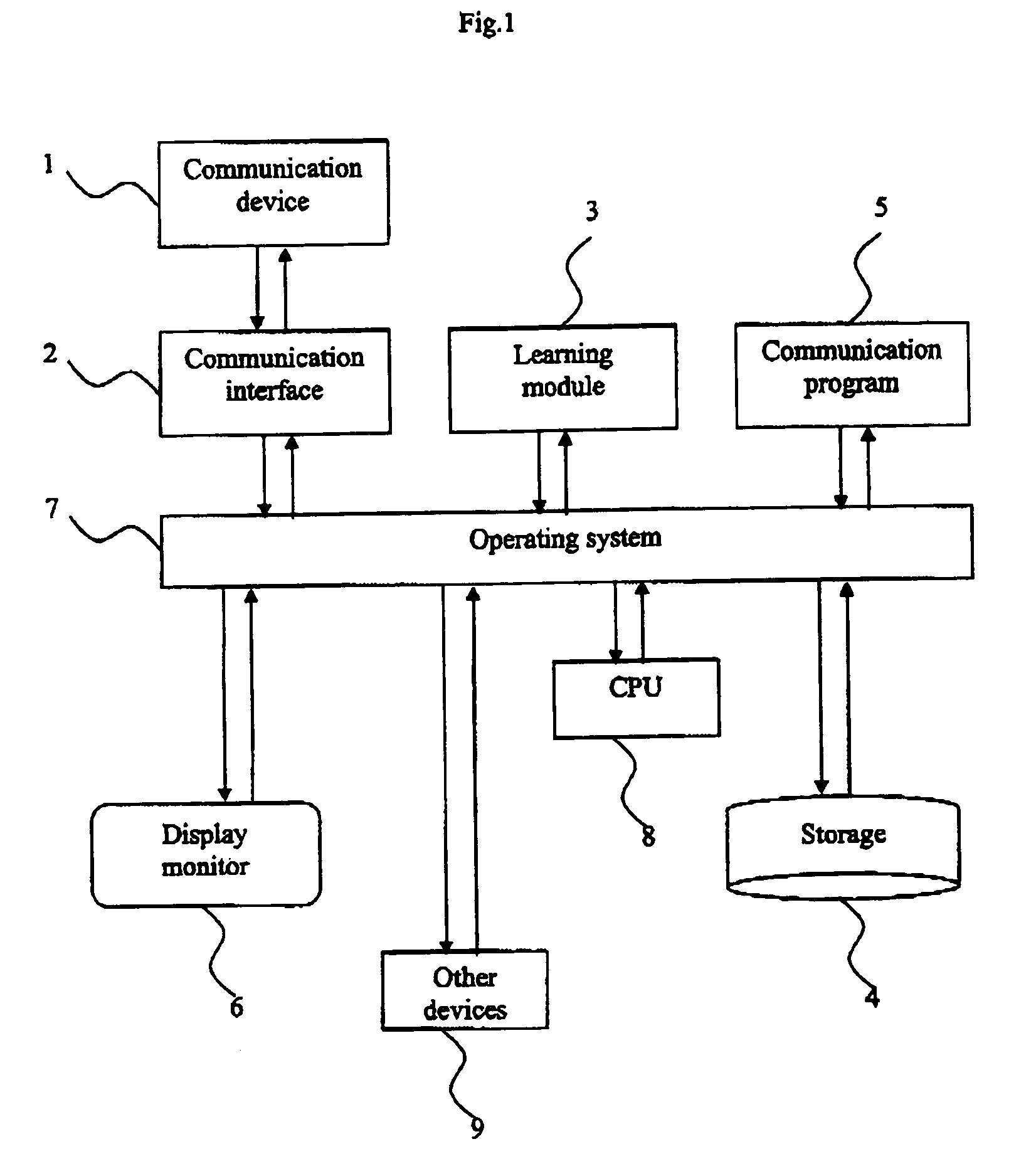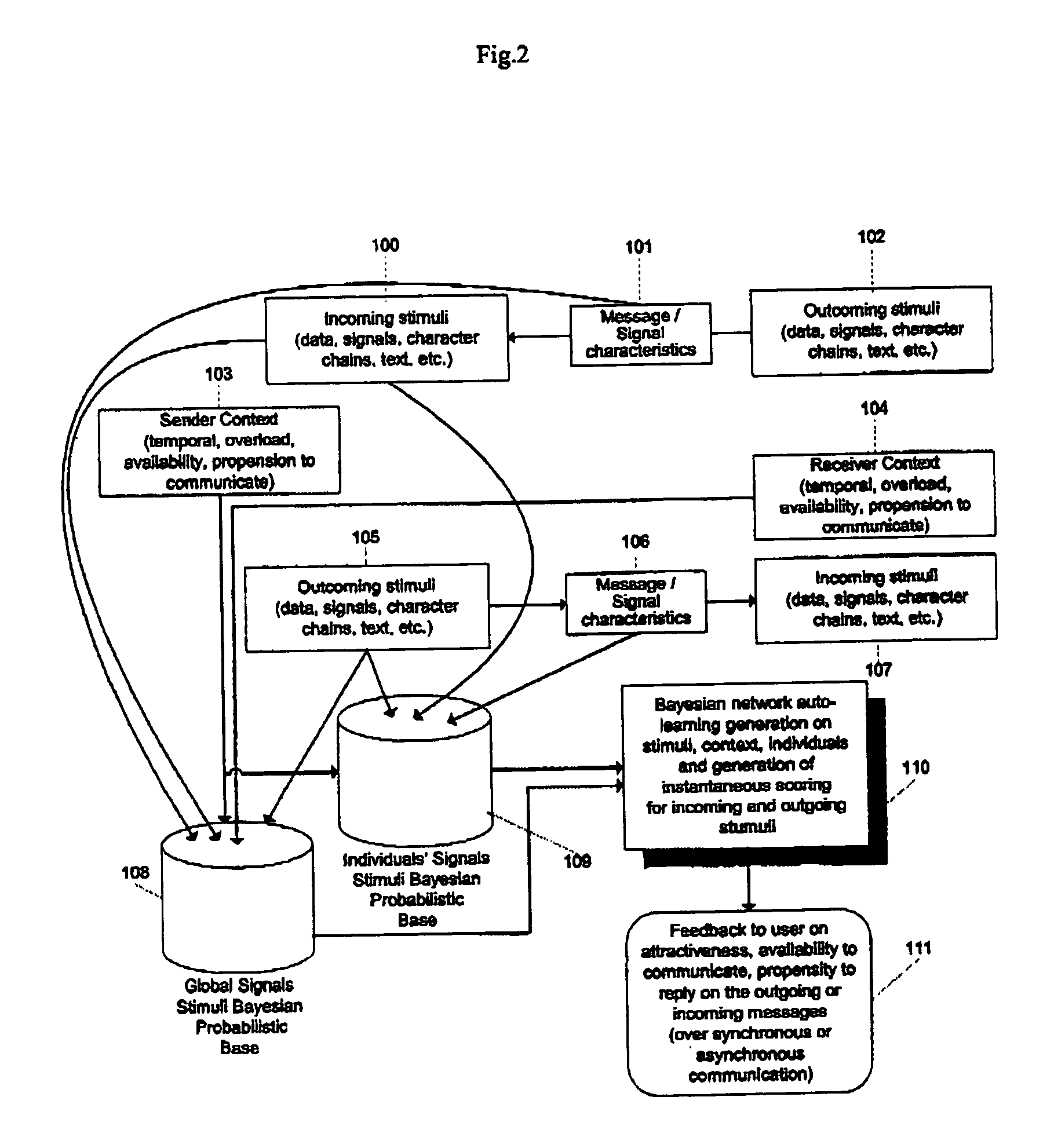Method and system for measuring interest levels of digital messages
a digital message and interest level technology, applied in the field of electronic communication, can solve the problems of generating new burdens, human beings still have the burden of determining undesired sources, and easy transmission of overabundance of messages, and achieve the effect of optimizing or maximizing the likeliness of messages, increasing the performance of prediction and accurate interactions
- Summary
- Abstract
- Description
- Claims
- Application Information
AI Technical Summary
Benefits of technology
Problems solved by technology
Method used
Image
Examples
Embodiment Construction
[0080]The system presented in FIG. 1 comprises a central processing unit (CPU) 8, a display monitor 6, a fixed or removable storage 4, a communication interface 2 and other devices 9 like keyboard, pointing device, printer or the like.
[0081]It is to be understood that the display monitor is not limited to a simple screen for displaying texts and pictures but can comprise also speakers to play sounds like voice or music.
[0082]The communication interface 2 is a conventional card or circuit for transmitting and receiving signals or messages to and from distant communication devices 1 like computers, phones, personal assistants or the like. The communication interface 2 is provided with conventional protocols on wide area network threw local area network, phone line, radio access network or any wireless network, to deliver digital data flows from the received signals into the system and to transmit signals from digital data flows produced by the system to the distant communication devic...
PUM
 Login to View More
Login to View More Abstract
Description
Claims
Application Information
 Login to View More
Login to View More - R&D
- Intellectual Property
- Life Sciences
- Materials
- Tech Scout
- Unparalleled Data Quality
- Higher Quality Content
- 60% Fewer Hallucinations
Browse by: Latest US Patents, China's latest patents, Technical Efficacy Thesaurus, Application Domain, Technology Topic, Popular Technical Reports.
© 2025 PatSnap. All rights reserved.Legal|Privacy policy|Modern Slavery Act Transparency Statement|Sitemap|About US| Contact US: help@patsnap.com



